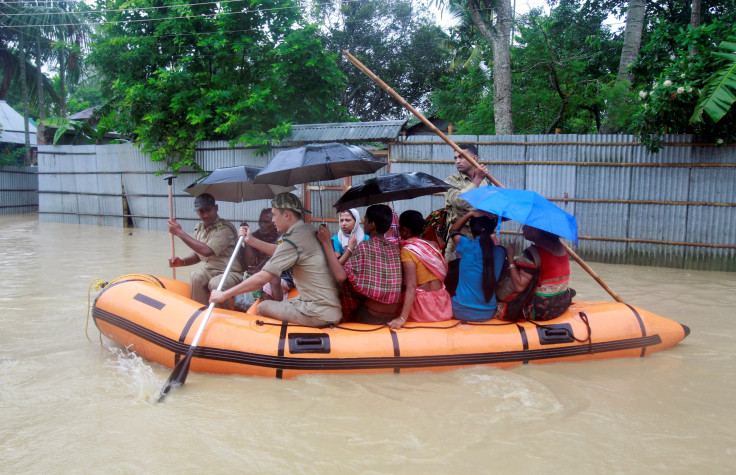Floods, Landslides Kill Almost 300 People In India In 1 Week

Almost 300 people have died in a single week in severe floods and landslides in different part of India, forcing thousands to flee their homes.
According to the Global Catastrophe Recap Report, which assesses the impact of natural disaster events worldwide, revealed that relentless seasonal flooding that began mid-June resulted in continued fatalities and damage across parts of Asia during the month.
India was not immune, and the worst hit were the states of West Bengal and Assam in the east of the country, and the western state of Gujarat.
But the most substantial and recent instance of death due to a natural calamity was reported from the northern Himalayan state of Himachal Pradesh last weekend, where at least 46 people were killed and several were injured after an enormous landslide buried two government-run buses in Mandi district.
The National Disaster Response Force (NDRF), the army and the police were deployed Sunday to help with rescue operations following the landslide near the Mandi-Pathankot highway on Aug. 12.
"46 bodies have been recovered and of these 23 have been identified," an official told NDTV.
These were added to the casualties being reported from the flood ravaged regions of the country, with the count increasing with every passing day.
The highest casualties have been reported from the state of Gujarat, where the death toll has reached 218 this monsoon; 61 people were killed in the worst hit region of the state, the district of Banaskantha, NDTV India reported.
"218 people have died, with 61 in Banaskantha and seven in neighboring Patan district. The toll increased in the last two days after more bodies were found as flood waters receded in Banaskantha and Patan districts of north Gujarat,” an official of the State Emergency Operation Centre said.
Heavy rains and the release of water from dams have so far affected 4.5 lakh people with more than 39,000 people shifting to more secure places and 11,400 more rescued by the Indian army, air force and national and state disaster response forces.
Although most people who were relocated during the rescue operations have now safely returned to their villages as the government is now more focused on providing them food and preventing an outbreak of water-borne diseases. Relief operation has been increased as the rains have subsided.
In Assam, as many as 14 people have already died till Sunday in the recent flood, with 21 out of the 33 districts being hit. The flood has forced the state government to call the Indian army for rescue operations. In an earlier flood which lasted for 4 months, from April to July, 85 lives were lost and 19 lakh people were affected.
The conditions are equally bad in the neighbouring state of West Bengal. Chief Minister Mamata Banerjee in a press conference Aug.13 said that the flood situation was deteriorating in north Bengal, where it had impacted five districts and flooded around 100 tea gardens.
Situations are not so good in Bihar as well where nearly 2 million people have been affected by the floods, including thousands of others who have been forced to evacuate their homes. The death toll in the state has risen up to 13. The meteorological department has also predicted heavy rains in the next 72 hours with the entire state being put on red alert.
The central government is also closely monitoring the conditions in Tripura as rescue and relief operations are being carried out by the NDRF. Around 750 flood affected people were safely evacuated till Saturday. However, three people have died and 13 injured in the last three days.
Things are no better in the neighbouring country of Nepal, where floods and landslides caused by heavy rains and have killed at least 49 people across the country.
About 100,000 people have been affected, with communications and electricity cut off in many areas, according to BBC.
Thousands of residents had to leave their houses in the areas that were hit the hardest, and officials have warned people in the area that the death toll could rise as 17 people are still missing in the area.
Relief operation has been increased as the rains have subsided.
© Copyright IBTimes 2024. All rights reserved.












